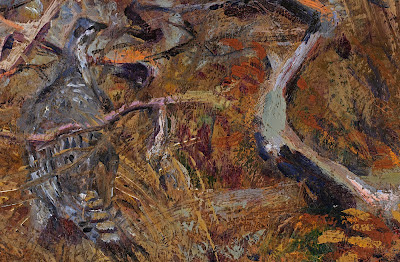Archival Photographer
The staff of the MHS Museum and Photograph Archives has been busy over the last few months photographing our complete Charles M. Russell collection in high resolution digital format. The work is being done for a coffee table book to be published by the Montana Historical Society Press, and for the museum’s image archive.

MHS Staff are digitally photographing every item in the Society's Charles M. Russell collection, including one of Russell's most famous works, "When the Land Belonged To God."
One benefit of doing this work is that we get to spend a considerable amount of time with each painting, both while we are shooting, and after the fact — as we check detail images, and zoom in on very small areas of each piece. We’ve become bigger fans of Russell’s work and have become aware of how much attention he paid to details. In some of his watercolors, a fully realized facial expression can be rendered with just a few brush strokes, on a person’s head that is about the size of a pea. That requires a serious skill set.
There are many good western painters, but few who had/have Russell’s sense of color or nerve to use it. This detail from the painting shows how Russell used pink, purple, and orange as highlights to paint a branch that surrounds a grouse — a detail that often goes unnoticed.

Detail of grouse from "When the Land Belonged to God."
In another detail, you will see splashes of turquoise, indigo, and fiery red used to depict a bison skull. A lesser painter would have settled for a palette consisting of grays, browns, and various shades of beige for the branches or the skull.

Detail of bison skull from "When the Land Belonged to God."
Charlie Russell’s work is known and loved the world over and we believe that one of the reasons for that is the details.